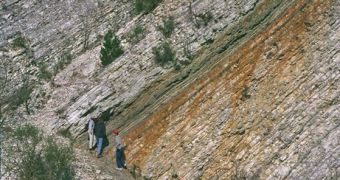The mass extinction of the marine life nearly 93 million years ago would have been most likely determined by the lack of oxygen in the oceanic waters as an intense underwater volcanic activity was triggered, says a study co-authored by Steven Turgeon of the University of Alberta. For a long time volcanism was thought to have been the culprit of the catastrophe, although this is the first time researchers find direct evidence that magma cooling in the ocean waters was responsible for the mass killing.
The results of the study may also point towards how the Earth reacts to an increase in the concentrations of greenhouse gases in the atmosphere. The evidence indicates that at the time, the oceanic current circulation was incredibly slow and the clime of the Earth much warmer than today, as the carbon dioxide levels in the atmosphere raised by 3 to 12 times the current one, allowing palm trees to grow as far as in the northern regions of Alaska.
"And now we have this magmatic pulse that happened at that time - a huge one by what we can tell - and that's what caused this chain reaction to drive the oxygen from the ocean and cause this mass extinction," Turgeon said.
The event, known today as OAE2, determined the decrease of oxygen levels in the oceanic and maritime waters, while the carbon dioxide concentration reached a point several times higher than the current one.
Rock formations found in South America and Italy, which formed the ocean floor in the middle of a period in Earth's history known as the Cretaceous seem to contain an osmium signature, remnant either from magmatism or from a meteorite impact. So far, there has been no evidence that any meteorite or other rock coming from space crashed on Earth during that respective period, although its presence can be accounted through a massive increase in the underwater volcanic activity, up to 50 times higher than today.
The eruption most likely originated in the Caribbean tectonic plate and put large amounts of metals in the water, determining an increase in the growth of the phytoplankton.
"When the plants died, this rain of organic matter fell through the marine water column and stripped it of oxygen. And this anoxic event in the deep waters led to the extinction of the flora and fauna that lived on the seafloor," said Timothy Bralower of the Pennsylvania State University.
According to the study, the excess amount of carbon dioxide remained in the atmosphere for as much as 20,000 years, before returning to a concentration similar to the one we know today.
"It is short-lived and it is real, and it provides some insight to how the atmosphere works. Today we're just at the beginning, and we have really no way except for models to predict what is going to happen in the future," Bralower said about the possibility of a similar event taking place in the future.

 14 DAY TRIAL //
14 DAY TRIAL //